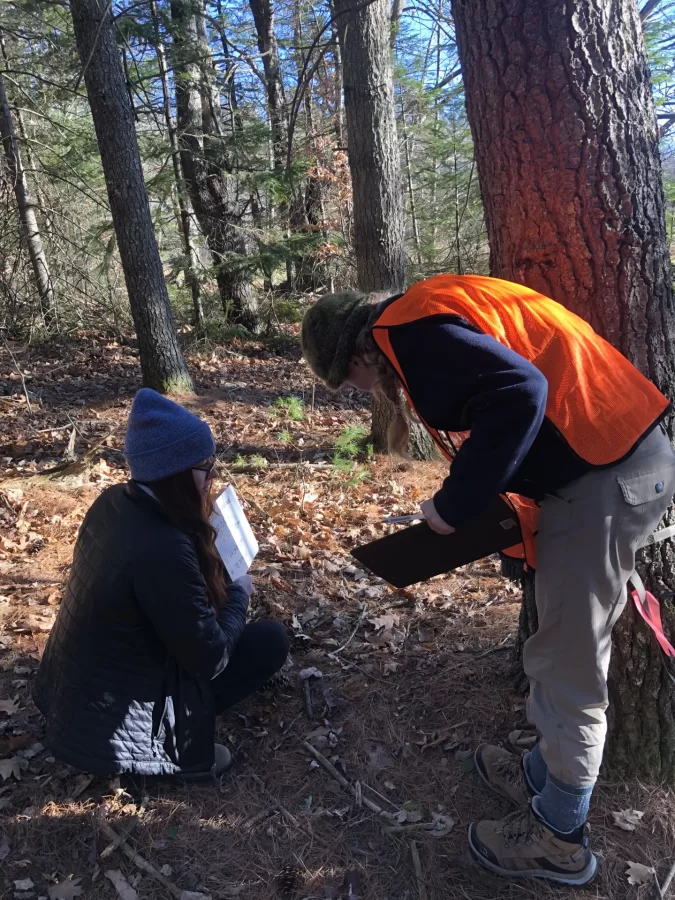Bobcats Studying Bobcats
This fall, Biology professor Eric LeFlore integrated community-engaged learning into both his BIO 195 and BIO 470 classes to get students out of the classroom and into the field. The collaborative project brought students, faculty, and local organizations together to study wildlife in the Lewiston-Auburn area. Professor LeFlore shared the big picture: “The work is contributing to a longer study investigating the best non-invasive survey techniques for cryptic carnivores, with a focus on bobcat.” LeFlore joined the Bates faculty in fall 2023, bringing expertise in large carnivores, human dimensions of wildlife management, and conservation biology.
Early in the semester, first-year Biology students taking BIO 195 and senior-level students taking BIO 470 spent class time deploying wildlife cameras in various locations across the region. Sites were identified by LeFlore in collaboration with the Harward Center, where we tapped into long standing partners in the environmental conservation area, including Stanton Bird Club, Androscoggin Land Trust, Lake Auburn Watershed Protection Commission, and the Auburn Conservation Commission. Among the locations the classes visited were well-known recreational sites like Garcelon Bog and Sherwood Forest.
In an end-of-semester poster session, the first-year students shared insights they gleaned from analyzing the roughly one month of footage they captured. Analysis projects were undertaken in small groups and involved tracking and comparing different species in terms of temperature changes, different times of day, and predator vs. prey species. Stanton Bird Club President Jeri Maurer attended the poster session to hear students present the findings of their work at the Thorncrag property and beyond. Maurer noted the importance of engaging young people in conservation work, as well the deep ties Stanton Bird Club has maintained with Bates College since the club’s founding in 1919, named in honor of Dr. Jonathan Y. Stanton, a Bates Professor who taught Ornithology.
As a first foray into fieldwork, the class offered first-year students an opportunity to try their hand at new research methods while learning about some of the many conservation areas local to the Lewiston Auburn area. While bobcat sightings were few, students encountered many other species while sifting through what many of them described as a great number of images. Animals captured on camera included flying squirrels, deer, and raccoons.
By analyzing the camera trap data, students gained insights into the distribution and behavior of animals in our area, which will be shared with local conservation partners. The project’s impact extends beyond the immediate data collection. Thesis and research students will continue the work over the winter, building on the foundation laid by the classes this fall. We look forward to seeing what Professor LeFlore and his students encounter next!
![C[P] R0S9 T66F:P0000 CORE_CAM M3](https://www.bates.edu/harward/files/2024/12/LeFloreClass-900x506.webp)
![C[P] R0S9 T46F:P0000 CORE_CAM M3](https://www.bates.edu/harward/files/2024/12/LeFloreFox-900x506.webp)
![C[P] R0S9 T54F:P0000 CORE_CAM M3](https://www.bates.edu/harward/files/2024/12/LeFloreBobcat-900x506.webp)
